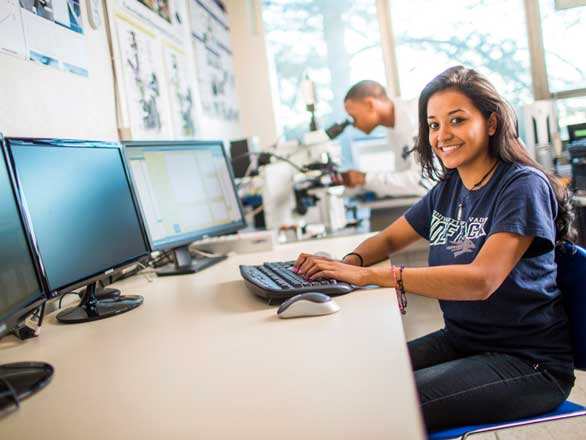Definition
Biomedical technology is the application of science and technology principles into the realm of bio-medical systems or physical sciences, with an interest in disease and healthy life. The field is very broad, encompassing a variety of approaches that have developed through time. Some approaches are scientific in nature, requiring rigorous scientific research to support their validity. Others are based upon the application of knowledge from other disciplines that hold great importance in modern day bio-medical practices. The field continues to expand as advances in knowledge occur.
As the demand for biomedical technology increases, research and development for these new technologies are being improved. Often times, these advances result in technology that can be used elsewhere, other than the affected area. This can be a great boon to those who suffer from a particular disease and wish for other people to be able to help them through the use of the technology they need. It also can help to improve overall health. By improving the quality of life for those who need treatment, research and development can help to lower health-related costs. This ultimately leads to more money available to those who need it.
Biomedical Informatics
Biomedical informatics pertains to the field of computer science and engineering which apply informatics’ disciplines to the medical domain. This includes everything from information science, bioinformatics, statistical computing and computer network security to clinical decision-making, diagnostic applications and improved disease prevention and care. The medical domain offers a very wide array of complex issues that are tackled by biological informatics specialists. This field is growing at an exponential rate and therefore it is expected to create an enormous demand in the future. Due to the interplay of technology and industry, this field presents tremendous opportunities to those people in whom it has been experienced and those who wish to have a career in this field.
Subfield – Clinical informatcis
One of the subfields of biomedical informatics is clinical informatics. This involves the application of mathematical and computer principles to solve problems in clinical medicine. For instance, a mathematical algorithm is used to analyse clinical images to detect diseases using a large set of image processing algorithms. This can help a researcher to detect a possible disease earlier than if they would have manually conducted the same analysis.
Subfield – Healthcare Studies
Another subfield of biomedical informatics is healthcare studies. In this field, a data warehouse design is used to integrate different sources of data such as radiology data, clinical documentation, Surgical outcome reports and outcomes and even patient information such as demographics and clinical histories. Healthcare studies also involves problem solving, progress monitoring, learning and incorporating lessons learned in order to provide services better. In addition, this subfield utilises knowledge management and data mining to improve healthcare practices and improve healthcare quality.
Biomedical Engineering
Biomedical Engineering is growing at an amazing rate all over the world and has the potential to do great things for society. With so many diseases and accidents affect people on a daily basis, the need to find solutions to these problems is great. One area that seems to be a major cause of disability and death is the limbs, and the developers of new prosthetic limbs are doing their best to find methods of fixing these problems. If they can successfully do this, it will give those with missing limbs another chance at living a normal life.
There are several ways that biomedical engineering is attempting to solve this problem. The first way they use is the use of ultrasonic systems, such as pacemakers and other similar electrical devices. Using ultrasonic waves, they are able to send signals to the brain, which is responsible for the generation of the messages that these pacemakers carry. Patients are then able to control their pacemakers by controlling their minds through thought.
Another way that these devices work is through the use of visual tracking. Biomedical engineering has already found a way to incorporate visual tracking into prosthetic limbs, allowing the patient to see their limbs as if they were still alive. This is done through the use of heat sources and the transfer of electromagnetic energy.
Biomedical Research
Biomedical Research is the investigation of different substances utilised to develop and improve medicines which are employed to cure various diseases. The research conducted in this regard utilizes modern tools and techniques developed by pharmaceutical scientists to generate the desired results with the assistance of high quality resources available at their disposal.
The development and testing of these medicines have been a challenging task owing to the ever increasing complexity of the tasks involved. It is due to this challenging task that many pharmaceutical graduates have found it increasingly difficult to make a success in this field.
Biomedical Research deals with the study of various chemical structures and properties that a particular chemical compound may have, in terms of its ability to cure any disease. These compounds are tested on animals to determine the degree of their effectiveness as medicines. Once the effectiveness of the medicine has been established, it is then prepared to undergo further tests on human beings to evaluate its safety.
As compared to other areas of science, medical chemistry has a relatively short history of significant achievements. But the field has made significant contributions towards the well being of mankind by producing new and improved medicines which ultimately prove to be beneficial.
Biomedical science
Biomedical science which can, also be referred to as health science, is the application of chemistry, biology, physics, engineering.
The subject is highly dynamic and ever changing because of the pace by which science is developing. There are innumerable challenges which need to be successfully overcome to bring about important changes in the field. This field has attracted numerous students to various disciplines like biology, chemistry, physics etc.
As these students are studying different branches of science, they have learnt the importance of studying biomedical research and how it helps in finding better cures and remedies. The advancement made in the field of biomedical science can help bring about new and improved medicines which can help in dealing with all types of diseases.
Regenerative Medicine
There are many branches of medical science that fall under the broader umbrella of biomedical engineering. One branch that has become especially popular in the last ten years or so is the field of regenerative medicine. This field advances stem cell research and development, studying the ways in which human diseases affect the production and use of cells, repairing tissues, and understanding the underlying causes of diseases.
Other areas of biomedical engineering are focused on the study of cancer, diagnosing and treating diseases that have no cure, development of genetically modified food, energy distillation systems, and nanotechnology. Other branches of medical science that are directly affected by the study of these topics include developmental biology, environmental and occupational health, occupational safety, and prosthetic and reconstructive surgery.
Regenerative medicine focuses on the study of nature’s ability to repair its own cells. It is also concerned with studying disease mechanisms and the effect of pharmacological agents on these mechanisms. Many of the diseases and conditions that are of a chronic nature, like Alzheimer’s and cancer for example, demonstrate symptoms that are not truly related to the disease in which case it is necessary to develop an understanding of the underlying cellular mechanism to treat the disease.
In this regard there is considerable debate among professionals in the field as to the exact nature of the relationship between the immune system, the brain, the body’s tissues and organs, and disease. In order to move the science of cellular biology forward there is a need for a unification of all aspects of regenerative medicine, which will in due course contribute to a more complete picture of the human body.
The field of regenerative medicine incorporates a lot of engineering and biology, with a great deal of work done in the field of engineering cells and developing materials to restore health and function to patients with severe diseases. It is also involved in research and studies of the effect of pharmacological agents on cellular repair and function. The focus on engineering and biology in this field is considerable and has produced significant advances in recent years. It is very interesting to see the effect of engineering and biology in repairing damaged and dying cells, and the use of engineered tissues, and especially in tissues and organs from donated tissue or animals.
Immunology
One area of bio-medical technology that has developed over the years is immunology. This is the study of the role of various types of infectious agents in causing and promoting disease. The field also includes a number of subdisciplines such as allergy and immunology, microbial and virology, epidemiology, and medical genetics. All of these areas of medical study to look at how disease affects the body and how the immune system reacts to disease.
Becoming a Biomedical Engineer

A biomedical degree is the first step towards advancing in one’s career or pursuing other interests in this field. This degree program will provide you with a solid foundation in mathematics, statistics, computer science, and biological or medical terminology. With your bachelor’s degree, you may also be able to qualify for a master’s degree or PhD in this very diverse field.







